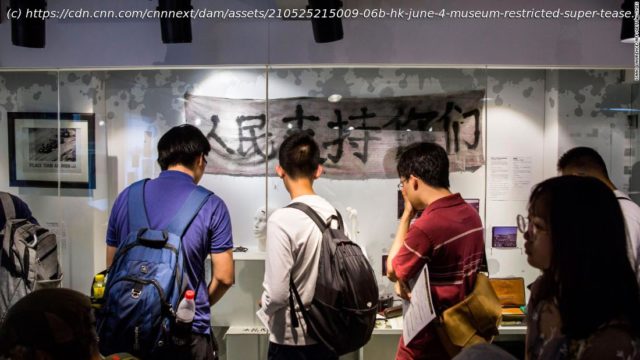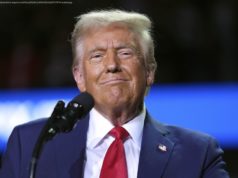Hong Kong’s June 4 Museum is the only museum in Greater China that memorializes the Tiananmen Square protests in Beijing in 1989. But its days may be numbered.
On June 1, Hong Kong officials from the Food and Environmental Hygiene Department (FEHD) visited the museum in the working-class area of Mong Kok and accused the organizers of operating a „place of public entertainment“ illegally. „Our department recently received a complaints that someone in a unit in a commercial building on Mong Kok Road was operating an entertainment venue without the required license,“ the FEHD told CNN in a statement. They added that this license is required for all businesses that „entertain people“ regardless of whether they charge money as an entry fee. The museum was free to visit. The vigil was canceled last year due to the coronavirus outbreak, and on Saturday a court sided with a police decision to cancel the event again this year, for the same reason. The next day, the June 4 Museum’s organizers, the Hong Kong Alliance in Support of Patriotic Democratic Movements of China (usually just called The Hong Kong Alliance), invited patrons to lay flowers at the museum to mark the day. The museum’s chairman, Lee Cheuk-yan, saw trouble coming. Back in March, he gave CNN a tour of the museum and predicted that the NSL could soon close it for good. „(The NSL) is always like a knife hanging around your neck,“ Lee said. „We don’t know when it would chop down on us.“ This year, Lee will spend June 4 behind bars. In April, he was sentenced to 18 months in prison for organizing and participating in unauthorized government protests in 2019. He faces further charges for other actions. Before he was sentenced, Lee met with CNN after a long day in West Kowloon’s high court. He was in remarkably good spirits, despite the looming threat of a jail term. He walked CNN through a few of his favorite pieces on display. Many were donated to the museum by the Tiananmen Mothers, a Chinese activist group composed of parents and loved ones of people killed during the June 4 protests. The most moving pieces are the personal ones — a Peking University T-shirt signed by activists, a bullet pulled from the leg of a labor organizer, a camera owned by a student who was shot while snapping pictures of the day’s events, and photographs the same student’s parents had developed posthumously. „The museum is only part of our work,“ Lee explained. He knows that movements don’t just happen in a single day, despite the museum’s name. „We are trying to firstly organize activity events around the June 4 commemoration. So, every year the June 4 commemoration vigil, and also the march before that. Apart from the June 4 commemoration, we also supported a campaign for the release of dissidents inside China.
Start
United States
USA — China Hong Kong's Tiananmen Square museum forced to close two days ahead of...






